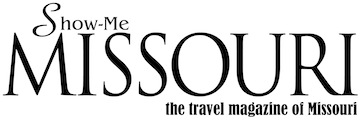Slediquette
November 2015

Oh sure, she prepared us for our adventure. She layered us in sweaters and coats and pants until we couldn’t bend, and she fixed mittens over our finger gloves because she hated to hear us cry when she had to run cold tap water over crab-slow fingers, almost frostbitten from overtime on snowy Forest Hill.
She knew we were going sledding.
After all, she and dad bought the sleds we picked out. Fearless Flyers or something like that. And she bit her lip because she knew the risks. Dad always reminded her about the time he flew down Strawberry Hill in Hannibal, guiding his sled between the front and rear wheels of a moving trolley car.
She knew all about Strawberry Hill because she grew up two blocks from there. As a child, she sledded that same hill, fearless and invincible. But that was before she became a mom.
As a mom she did all she could to make us safe.
“Watch for cars. No pile ups. Stay away from trees and curbs and culverts.” Of course, she also supplied the paraffin to wax our runners. “This’ll help you go faster,” mom promised.
She never made us wear helmets. But she would’ve fitted us in body armor if she had known what we did.
A half mile from our house, on an Ozark hill at the edge of Rolla, somebody had positioned an old Plymouth car hood as a makeshift ski jump for sledders. Word traveled fast about the sled jump, and we went straight there. It took all afternoon to work up our nerve to jump that car hood. Meantime, we raced and formed sled trains and double deckers and triple deckers. We went down the hill backwards.
About the time our fingers started tingling, a kind of brain freeze numbed our fear, and we took off down the hill to rock the Plymouth hood.
During any sledding event, it was a safe bet there would be casualties. Mainly, inanimate objects got damaged. Plastic sleds and saucers were the first to break. And the car hood, even packed with snow, lost its graceful shape. Every once in a while, we’d bend a steel runner or split a centerboard, which destroyed Fearless Flyer’s guidance system. Despite our daring jumps, rarely did we suffer anything more than a bloody nose or a loose tooth.
Always in the backs of our minds we heard the warnings from mom.
“You can get hurt if you’re not careful.” Then she’d tell the story about the kid who broke his neck, or lost a tooth or an eye. We would shudder and promise her we’d be careful. Then we’d head to the most dangerous slope and let ‘er rip over the car hood or some other makeshift jump. We were young and invincible, and we were going to live forever.
If you’re reading this passage to your toddlers, tell them not to try this. But please understand that your children, as they grow and experiment with life, will do stupid stuff like this, and they’ll never tell you. That’s just the nature of things.
We always stayed too long, even when the snow was slushy and the sledding was slow.
“Just one more ride,” we would agree, spending our last energy pulling our sleds up the hill, slipping and sliding to the start.
Then we’d go home for the warmup, and the cold water torture on near-frostbitten fingertips.
Nowadays snowboarders laugh at our 1950s makeshift sled runs. That’s okay. We used what we had. We did what we knew.
This winter when conditions are right, after a fresh snowfall, sledders and snowboarders will hit the slopes. Wherever it’s still permissible, they’ll find a perfect hill. And when they’re not texting or tweeting or taking selfies, they’ll plunge downhill to test the limits of their bravery and gymnastic skills.
But don’t tell mom.
Read more of the author’s stories at JohnDrakeRobinson.com. For more stories about growing up in rural Missouri, check out the trilogy by Bollinger County native author Stan Crader: The Bridge, Paperboy and The Longest Year.
